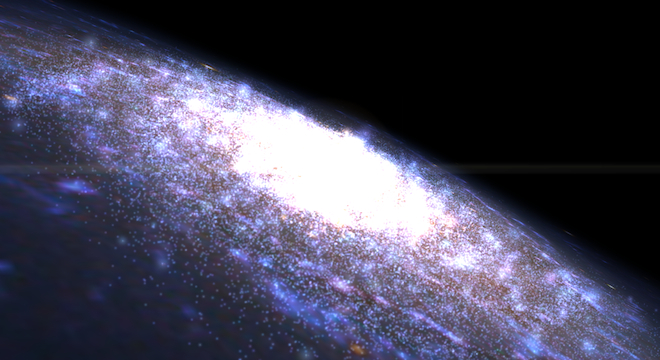The experience of traveling through outer space at faster-than-light speeds is now as easy as firing up a Web browser, thanks to “100,000 Stars,” an interactive map of the nearby Milky Way Galaxy created as an experiment by Google for its Chrome Browser.
Released on Wednesday, 100,000 Stars lets users zoom in and out, adjust orientation and click on stars near our own solar system, including the Alpha Centauri system, to find out more information about them from Wikipedia. Users can also take a guided tour of our stellar surrounds, by clicking the button in the upper left hand corner of the screen.
The locations of the stars and other data necessary to create the awe-inspiring map was obtained from NASA and the European Space Agency (ESA), as Aaron Koblin, head of the data arts team at Google’s Creative Lab, explained in a blog post.
The experiment also relies on a number of advanced Web browser technologies, including WebGL, CSS3D, and Web Audio, and only works on Google Chrome or Mozilla Firefox for now. It also boasts a musical soundtrack by scored Sam Hulick, the acclaimed videogame composer behind the space opera “Mass Effect,” among other titles.
All in all, it took Google’s Creative Lab team “about five weeks,” to build 100,000 Stars, as Val Klump, a copyrighter and producer with Google’s Creative Lab, explained to TPM.
“The most challenging part was ensuring that the visualization was accurate — we didn’t know what it would look like before we made it,” Klump said. “There was no frame of reference that we could double check against.”
And it is accurate, for the most part, with all of the star positions scaled the appropriate number of light-years away from one another. However, Google’s blog post notes that the zoomed-out view of the galaxy is an “artist’s rendition.”
Overall, though, the simulation contains exactly 119,617 stars, 87 of which users can click on and find out their designations and further information about them. There’s also a clear boundary depicting the location of the “Oort cloud,” the bright sphere surrounding our Solar System that marks the edge of the Sun’s gravitational effects.
Aside from proving the power of Google’s Chromer browser and the meticulousness of its Creative Lab team, the company created the simulation in an effort to give users an appreciation for the sheer size of the Milky Way and how small and specific a part of it is our own stellar neighborhood.
“We hope it will show how enormous the galaxy is,” Klump told TPM. “There are an estimated 200 to 400 billion stars — it’s so big that’s astronomers can’t quantify better than that. The ones we have mapped is a drop in the proverbial bucket.”
Google’s 100,000 Stars chart is also just the latest visually arresting, interactive display of a data set that the Creative Lab team has cooked up for Chrome users: Earlier in the year, Google released a map of the global arms trade using data from the Peace Research Institute in Oslo, Norway, as well as “Cloud Globe,” a realtime tropical storm and weather tracker.
But you’ll have to get Google’s free Chrome browser to view any of them, including 100,000 Stars.
“We have no plans to make it a standalone app,” Klump said of the Creative Lab’s latest experiment.






